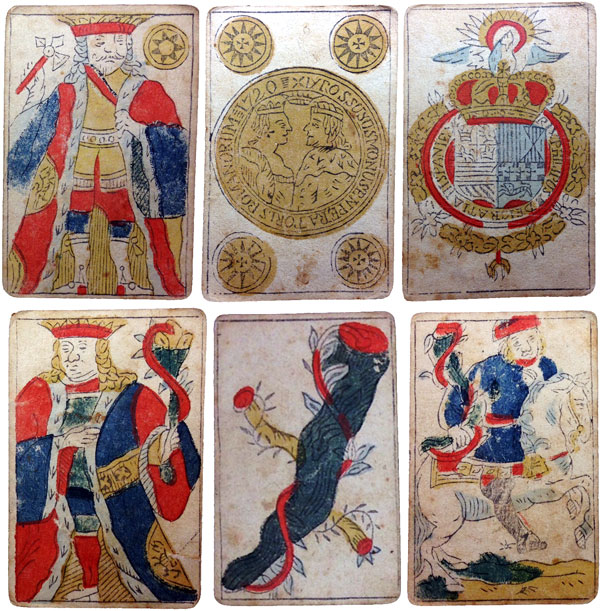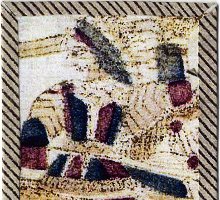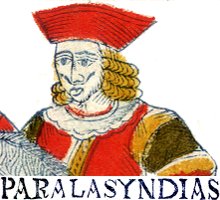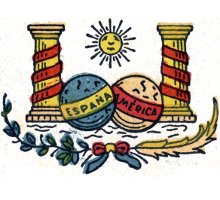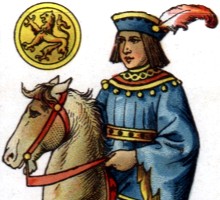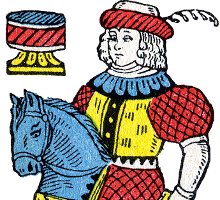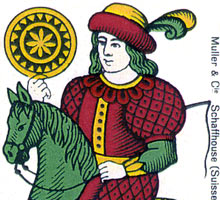Latin American Playing Cards
Playing cards had been introduced to the Americas with explorers such as Columbus or Cortés, whose fellow countrymen were keen gamblers. Cards were imported from Spain since the 16th century. Local production usually imitated Spanish cards.
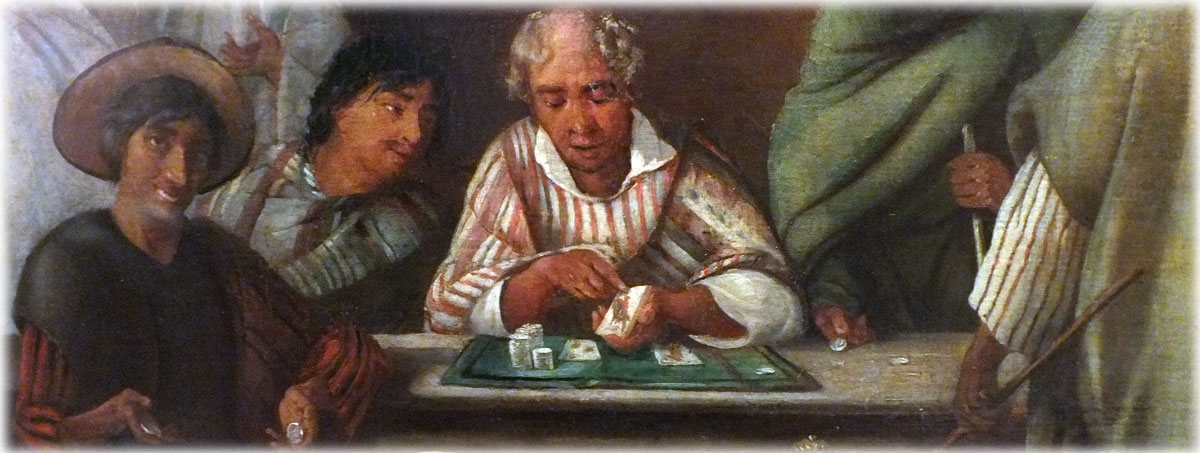
Playing Cards in Central and South America
Playing cards had been introduced to the Americas with explorers such as Columbus or Cortés, whose fellow countrymen were keen gamblers. On his first voyage, Columbus discovered San Salvador Island, Hispaniola (now occupied by the Dominican Republic and Haiti) and Cuba, and on his second voyage, Puerto Rico and Jamaica (1493). The following year, the Catholic Monarchs and John II of Portugal signed the Treaty of Tordesillas to apportion the rights to future discoveries, drawing a line along the meridian 370 degrees west of Cape Verde Islands and granting Portugal all of the territory to the east of that line and Spain all of the territory to the west of it (1494).
By 1576 the Spaniards began to establish playing card monopolies in their South American dependencies from which they gathered revenues for the Spanish crown. The first of these was in Mexico and another important one was the Royal Factory at Macharaviaya. Revenue from the tax on both imported and locally manufactured cards was a significant addition to the Spanish treasury.
The precolumbian civilisations left an impressive memory of their everyday life which is still visible today, in their food and clothing, their everyday and ceremonial utensils, how their leaders looked, the images of their gods and some inkling of their customs, rites, beliefs and knowledge. Much of this appears in the many Aztec, Inca or Maya themed decks, as well as gaucho decks. Native Indian cards are a curious spin-off and the Apaches in particular, but also other tribes and ethnic groups made their own cards modelled on the Spanish pack.
More recently, in Latin America juntas and dictatorships have prevailed in many countries, but by the end of the 20th century authoritarianism had retreated and democracy moved forwards: Chile, Argentina, Uruguay, Brazil, Nicaragua, Mexico and El Salvador developed multi-party systems and their economies changed, all of which affects the types and quality of playing cards found there today.
During the 18th and 19th centuries Italian card makers such as Pedro Bosio, Agostino Bergallo and Giuseppe Cattino supplied Spanish-suited playing cards to Spanish colonies in South America. During the 19th century the main market of the Cadiz naiperos was exporting to Latin America and the Philippines, as well as the many Spanish-speaking inhabitants of the United States. In 1903, for example, 76,060 decks were exported to U.S.A. Cards were also exported from Belgium and various European manufacturers such as Fournier, Comas, Dondorf, Goodall, Grimaud, Müller USPCC and C.L. Wüst. These were usually in the Cadiz pattern. For example, Dougherty manufactured Spanish-suited cards for sale in Mexico and South America beginning in 1882.
South American pack by Wüst, late 19th century - © The Trustees of the British Museum 1896,0501.309►

Above: cards depicting indigenous people of Brazil, Peru and Mexico, published by Conrad Ludwig Wüst, late 19th century. © The Trustees of the British Museum 1896,0501.309►
You can click the countries on the map...
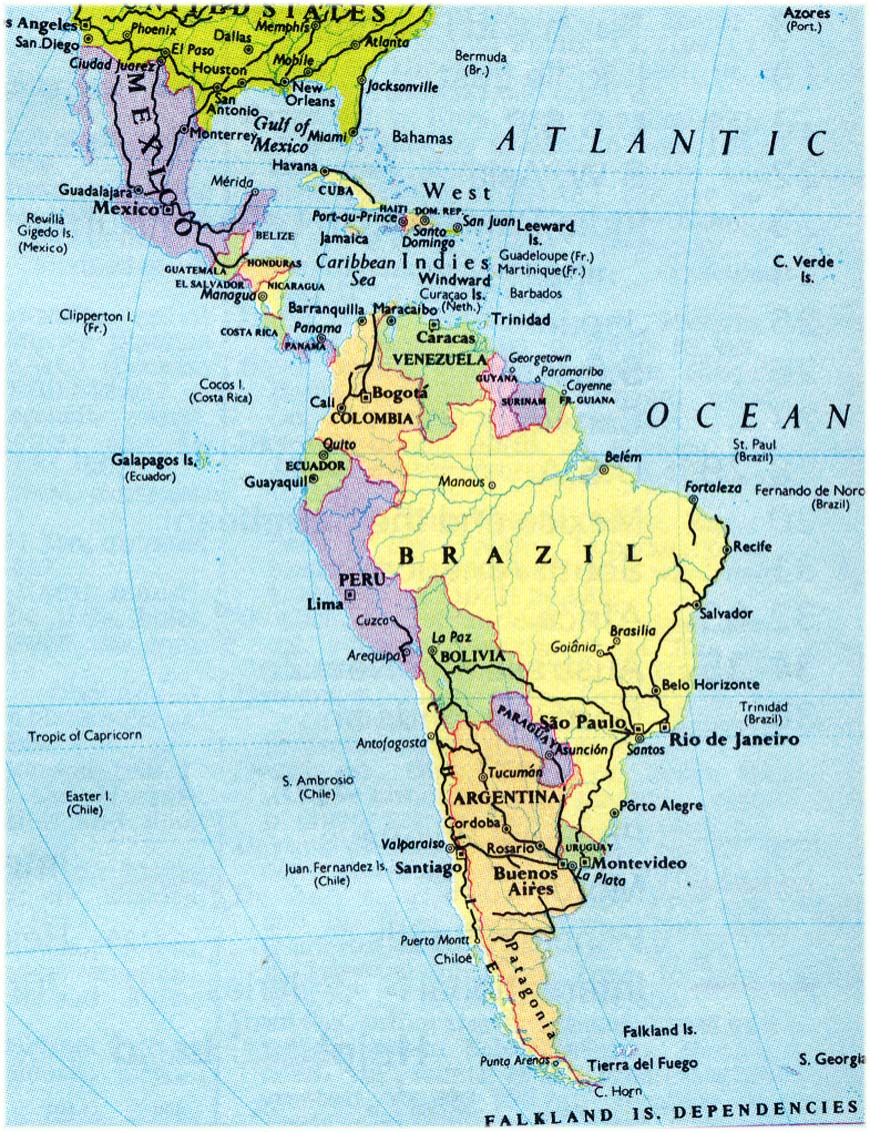

Above: Spanish playing cards exported to new Spanish colonies from c.1550 onwards. Cards like these would have been in use for the first 200-300 years or so after the first Spanish settlers arrived. (click the images to see more)
Further References
Sanz Tapia, Ángel: Culturas Precolombinas, Ajuntament de L'Hospitalet, 1994.
British Museum: uncut sheet illustrating the costumes of South America►

By Simon Wintle
Member since February 01, 1996
I am the founder of The World of Playing Cards (est. 1996), a website dedicated to the history, artistry and cultural significance of playing cards and tarot. Over the years I have researched various areas of the subject, acquired and traded collections and contributed as a committee member of the IPCS and graphics editor of The Playing-Card journal. Having lived in Chile, England, Wales, and now Spain, these experiences have shaped my work and passion for playing cards. Amongst my achievements is producing a limited-edition replica of a 17th-century English pack using woodblocks and stencils—a labour of love. Today, the World of Playing Cards is a global collaborative project, with my son Adam serving as the technical driving force behind its development. His innovative efforts have helped shape the site into the thriving hub it is today. You are warmly invited to become a contributor and share your enthusiasm.
Related Articles

Tarot de Valverde de la Vera
A series of 24 surrealist engravings by Mexican artist Claudio Favier in which archetypal Tarot alle...

Visite Mexico
Promoting Mexican tourism with 54 different photographs in full colour.

Tarot Baraja Egipcia
Curious Tarot with Egyptian-style trumps issued by Franco Mora Ruiz from Mexico.

Jockey Club de Buenos Aires
Spanish-suited pack by Chas Goodall & Son Ltd for the Jockey Club, Buenos Aires.

Mexican ethnic playing cards
Mexican ethnic groups depicted on playing cards by Fábrica de Naipes Cuauhtemoc.

Braulio Fournier
Baraja Nº 1 produced by Braulio Fournier, Burgos, c.1868.

Spanish pattern by Eugène Boisse
Spanish pattern published by Eugène Boisse, Bordeaux.

Catalan pattern by B.P Grimaud
Standard Spanish Catalan pattern deck made in Paris by B.P Grimaud.

Santo Mexico playing cards
Santo Mexico playing cards designed by Cédric Volon with Mexico-associated symbols.

Archaic Spanish proof sheets
2 x uncoloured proof sheets of archaic Spanish-suited playing cards produced for “New Spain”, possib...

Battles in Mexico, 1847
Uncut proof sheet with Mexican Battle scenes on the aces and portraits of American generals on the c...

Colonial Art
A collection of 53 pieces of art showcasing detailed scenes from early American colonial life.

QAIPES – cartas españolas
Spanish-suited cards made in China inscribed “QAIPES” and “BAIPES”!

Naipes Kukuxumusu
A 52-card Spanish-suited advertising pack for a clothing company in Pamplona.

Asha Industries’ Castilian pattern
Colourful Spanish (Castilian) pattern cards made by Asha Industries in India for Mexico.

Peintres Latino Americains
Original artwork by 18 different Latin American artists.
Most Popular
Our top articles from the past 28 days


